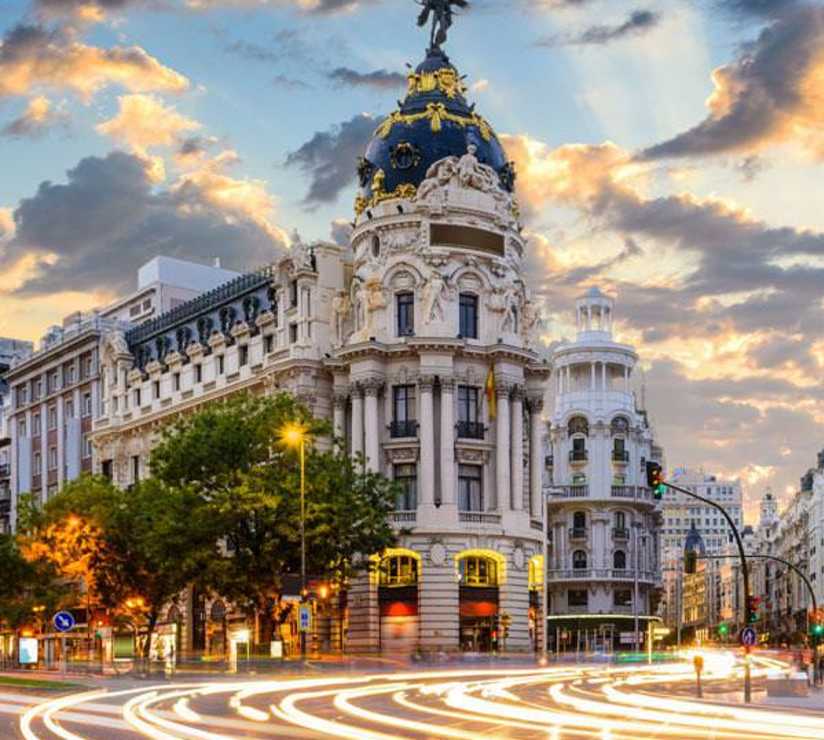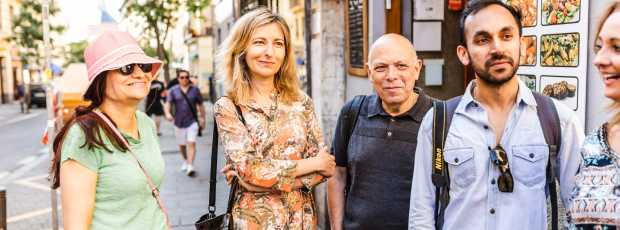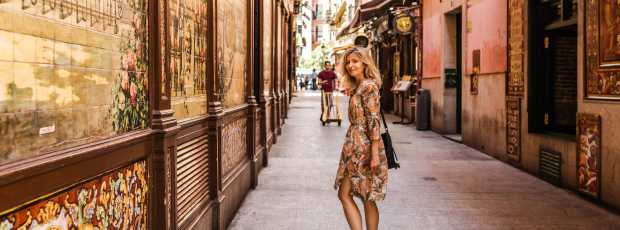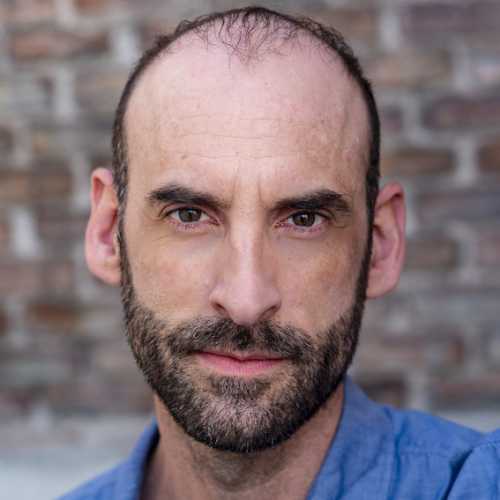Table Of Contents
- The Heart of It All: Marienplatz and the Real Central Munich
- Beer Culture: More Than Just Oktoberfest
- Gardens and Green Spaces: Munich's Secret Weapon
- Museum District: Culture Without the Crowds
- Olympic Park: Beyond the Games
- Local Markets: Where Real Life Happens
- Walking Munich: The City on Foot
- Day Trip Possibilities: Escaping the City
- Seasonal Rhythms: Munich Throughout the Year
- Food Beyond Sausages: Munich's Evolving Cuisine
- Hellabrunn Zoo: More Than Animal Watching
- Transportation: Moving Like a Local
- The Reality of Munich Life
- Planning Your Munich Experience
- Munich What to See: Beyond the Surface
- Final Thoughts: Living Munich vs. Visiting Munich
Look, I've lived in Munich my entire life, and I'm tired of reading travel guides that make this city sound like some fairy-tale wonderland where every moment sparkles with Bavarian magic. Don't get me wrong, I love this place. But let me tell you what Munich is really like when you strip away the tourist brochure nonsense.
Munich what to do isn't about checking boxes on some Instagram-worthy bucket list. It's about understanding the flow of a city that's simultaneously ancient and modern, traditional and progressive, laid-back and surprisingly efficient. After three decades here, I've learned that the best experiences happen when you stop trying so hard to have "the perfect Munich experience."
The Heart of It All: Marienplatz and the Real Central Munich
Every guide starts with Marienplatz, Munich's central square, and honestly, they're not wrong. But here's what they don't tell you: come early in the morning or later in the evening if you want to actually experience it rather than just photograph it through a crowd of selfie sticks.
The new town hall dominates the square with its Gothic Revival architecture that's actually younger than my grandmother's house; built in the early 1900s. The famous Glockenspiel chimes at 11 AM, noon, and 5 PM, and yes, tourists gather like pigeons for breadcrumbs. But if you position yourself at Café Glockenspiel with a coffee, you get the show without the shoulder-to-shoulder experience.
What most visitors miss is wandering the pedestrian zone that radiates from this central Munich hub. Kaufingerstraße and Pedestrianstraße aren't just shopping streets, they're arteries of daily life where you'll see how Munich actually functions beyond the tourist facade.
Beer Culture: More Than Just Oktoberfest
Let's address the elephant in the room: beer. Yes, we drink it. No, we don't wear lederhosen to work. And Oktoberfest, while fun, represents about 0.01% of Munich's actual beer culture.
Real beer culture happens in our neighborhood beer gardens, where locals gather after work, bring their own food (yes, really), and sit at communal tables under chestnut trees. The English Garden's beer garden is famous, but try Augustiner-Bräu or Löwenbräukeller for a more authentic experience.
Here's an insider tip: Order a Maß (one-liter mug) if you want to fit in, but don't feel pressured to finish it. Even locals sometimes switch to a smaller Halbe as the evening progresses. And please, for the love of all that's holy, don't clink your mug against someone else's; that's tourist behavior that makes us cringe.
The famous beer hall experience at Hofbräuhaus is touristy, but if you must go, visit on a weekday afternoon. You'll get the atmosphere without feeling like you're at a theme park.
Looking for a private city experience in Madrid?
Explore the city with a local who plans a private day just for you; no groups, no scripts.
Gardens and Green Spaces: Munich's Secret Weapon
Munich has more green space per capita than most European cities, and we locals use every square meter of it. The English Garden isn't just one of the world's largest urban parks; it's our backyard, our gym, our social club, and our sanity saver all rolled into one.
The park stretches from the city center northward, and it's bigger than New York's central park. You can walk from Odeonsplatz to the northern edge and feel like you've left the city entirely. The Chinese Tower beer garden sits in the middle, but the real magic happens along the walking and cycling paths where locals jog, walk dogs, and practice everything from tai chi to tightrope walking.
Don't miss the surfers at Eisbach. Yes, surfers in landlocked Bavaria. The artificial wave at the southern end of the English Garden draws board riders year-round, creating one of Munich's most uniquely local scenes.
Nymphenburg Palace and its gardens represent Munich's more formal green side. The baroque palace itself is worth a quick visit, but the real treasure is the expansive park behind it. These beautiful parks include canals, pavilions, and enough walking paths to lose yourself for hours.
Museum District: Culture Without the Crowds
Munich's museum quarter (Kunstareal) houses some of Germany's most important collections, but here's how to approach them like a local: pick two maximum per visit, and go on weekday mornings.
The Alte Pinakothek holds one of the world's finest collections of Old Master paintings. It's not the flashiest museum, but standing in front of a Dürer or Rubens in relative quiet beats fighting crowds at more famous galleries in other cities.
For something more contemporary, the Museum Brandhorst showcases modern and contemporary art in a building that's as striking as its contents. The locals' secret: Thursday evenings often feature special events that transform the museum experience entirely.
The Deutsches Museum, dedicated to science and technology, is massive; plan accordingly. It's one of those places where you can easily spend an entire day walking around. Locals often return multiple times to explore different sections.
Olympic Park: Beyond the Games
Olympic Park might seem like yesterday's news, but it remains one of Munich's most underutilized gems. Built for the 1972 Olympics, the complex now serves as a massive recreational area that most tourists ignore completely.
The Olympic Stadium still hosts concerts and events, but the surrounding parkland offers swimming, cycling, and walking trails that locals use year-round. Climb the Olympic Tower for panoramic views of the city and the Alps on clear days; it's touristy, yes, but the perspective helps you understand Munich's geography.
BMW Welt, adjacent to the Olympic Park, combines car showroom, event space, and architectural landmark. Even if you're not a car enthusiast, the building itself is worth seeing, and entry is free.
What if your day in Madrid was planned by someone who knows it — and you?
City Unscripted matches you with a local host who creates a private experience based on your interests, not a set route.
Local Markets: Where Real Life Happens
Viktualienmarkt, Munich's central market, occupies the space between tourist attraction and local necessity. Yes, it's in every guidebook, but it's also where many Munich residents actually shop for produce, meat, and specialty items.
Visit mid-morning on weekdays to see the market functioning as intended. The prepared food stalls serve decent meals, but the real action happens at the permanent vendors who've been here for decades. Strike up conversations, many speak English and offer genuine insights into Munich life.
Smaller neighborhood markets throughout the city provide more authentic experiences. The Saturday market at Elisenhof or the Wednesday market in Schwabing show how locals actually shop and socialize.
Walking Munich: The City on Foot
Munich reveals itself best to those who walk. The city center remains compact and pedestrian-friendly, but don't limit yourself to the obvious tourist circuit.
A walk from Marienplatz through the old town toward the river takes you past medieval churches, Renaissance courtyards, and modern shops occupying centuries-old buildings. The architecture tells Munich's story better than any history book.
The Isar River, which flows through Munich's eastern edge, offers surprising urban nature. Local residents stroll along the riverbanks, especially the section near the Deutsches Museum, where the water creates small rapids and sandy beaches appear in summer.
For a longer walk, follow the railway bridge (Isarbrücken) southward to discover neighborhoods that most visitors never see. These areas show Munich's residential character. Less picturesque than the city center, but more genuine.
Day Trip Possibilities: Escaping the City
Munich's location makes it an excellent base for exploring Bavaria and beyond. The most sobering day trip leads to Dachau concentration camp, about 30 minutes by public transport. It's not pleasant, but it's important, and the memorial site provides crucial historical context for understanding modern Germany.
For lighter escapes, the Alpine foothills begin just an hour south of the city. Take the S-Bahn to end stations like Tutzing or Herrsching for immediate access to lakes and hiking trails. No car required, no tour groups necessary.
Neuschwanstein Castle, the Disney-inspired fairy-tale castle, sits about two hours away. It's crowded and commercialized, but if you must see it, book tickets in advance and prepare for an expensive, rushed experience.
Tip
We match you with the right host, not just any guide.Want to experience the real Madrid with someone who lives there?
A fully private experience, planned and led by a local host who tailors the day to you
Seasonal Rhythms: Munich Throughout the Year
Munich changes personality with the seasons in ways that impact what you should prioritize. Summer brings beer garden culture to full bloom, but it also brings crowds and higher prices.
Winter Munich transforms into something more intimate. Christmas markets appear throughout the city, with the main market at Marienplatz. The smaller markets in neighborhoods like Schwabing or Haidhausen offer warmer, more local experiences.
Spring and fall represent Munich at its most livable. The weather cooperates, tourist crowds thin out, and locals reclaim their city. These seasons offer the best opportunities to experience authentic Munich life.
Food Beyond Sausages: Munich's Evolving Cuisine
Munich's food scene extends far beyond bratwurst and pretzels, though we do those very well. The city's restaurant landscape reflects its position as an international business center while maintaining strong regional traditions.
Traditional Bavarian restaurants (Gasthäuser) serve hearty portions of local specialties. Try Schweinebraten (roast pork), Sauerbraten (marinated roast beef), or Weisswurst (white sausage) with sweet mustard. But don't expect delicate presentation, this is comfort food designed for people who work outdoors.
International cuisine thrives here, reflecting Munich's cosmopolitan character. The Glockenbachviertel and Maxvorstadt neighborhoods host excellent Italian, Turkish, Vietnamese, and Middle Eastern restaurants that locals frequent regularly.
Hellabrunn Zoo: More Than Animal Watching
Hellabrunn zoo deserves mention not as a typical tourist attraction but as a well-designed space that Munich residents use for recreation. The zoo pioneered the concept of geo-zoos, organizing animals by geographic origin rather than species.
It's particularly popular with families, but the landscaping and design make it pleasant for adults without children. The beer garden within the zoo (yes, really) provides a uniquely Munich experience.
Ready to plan your perfect day in Madrid?
Start your experienceTransportation: Moving Like a Local
Munich's public transportation system works efficiently, but understanding local patterns helps you avoid tourist mistakes. Buy day passes or longer-term tickets rather than single rides. The savings add up quickly.
Locals use bikes extensively, and the city's flat terrain makes cycling practical year-round. Bike rental stations throughout the city center make short-term cycling easy for visitors.
Walking remains the best way to discover Munich's character. The city center stays compact, and many attractions cluster within a reasonable walking distance of each other.
The Reality of Munich Life
Here's what guidebooks don't tell you: Munich residents work hard, value efficiency, and appreciate directness. We're friendly but not effusive. We follow rules but know when to bend them. We love tradition but embrace change when it makes sense.
This contradiction defines the Munich experience. You'll encounter cutting-edge technology companies operating from buildings that are centuries old. You'll drink beer in gardens that double as business meeting locations. You'll discover that locals navigate between speaking Bavarian dialect and international English with equal fluency.
Planning Your Munich Experience
Don't try to see everything. Pick a few areas or themes that interest you and explore them thoroughly rather than rushing between attractions. Munich rewards slow discovery over rapid consumption.
Allow time for spontaneous experiences. Some of Munich's best moments happen when you abandon your schedule to follow an interesting street, join a conversation at a beer garden, or discover an unlisted neighborhood festival.
Book accommodations near public transportation but not necessarily in the city center. Neighborhoods like Glockenbachviertel, Maxvorstadt, or Lehel offer better value and more authentic local atmosphere than tourist-focused areas.
Munich What to See: Beyond the Surface
The question of Munich what to see ultimately depends on what you're seeking. If you want fairy-tale Germany, stick to the old town and major attractions. If you want to understand how Munich actually functions, spend time in residential neighborhoods, local markets, and suburban beer gardens.
Munich's true character emerges through repetition and routine rather than one-time visits. The city reveals itself to those who return to the same coffee shop, who learn the rhythm of the market vendors, who understand which U-Bahn car positions them best for their destination.
This isn't a city that overwhelms you with immediate drama like Paris or New York. Munich grows on you gradually, like a friendship that deepens over time. The Munich experiences that matter most often happen when you're not trying to have an experience at all.
Final Thoughts: Living Munich vs. Visiting Munich
After 30 years here, I've learned that Munich's greatest strength lies in its livability rather than its spectacle. It's a city designed for residents first and tourists second, which ironically makes it more rewarding for thoughtful visitors.
Don't come to Munich expecting constant excitement or overwhelming beauty. Come expecting a well-functioning city where people live good lives, where tradition and modernity coexist comfortably, and where the best experiences often happen at human scale rather than monumental proportions.
The city will teach you the difference between visiting a place and understanding it. And once you understand Munich, even a little bit, you'll find yourself planning your return visit before you've finished your first one.
That's the real Munich magic; not the tourist board version, but the slow-burn appreciation that comes from recognizing quality of life when you encounter it. And yes, the beer doesn't hurt either.
What if your day in Madrid was planned by someone who knows it — and you?
City Unscripted matches you with a local host who creates a private experience based on your interests, not a set route.
Want to experience the real Madrid with someone who lives there?
A fully private experience, planned and led by a local host who tailors the day to you










